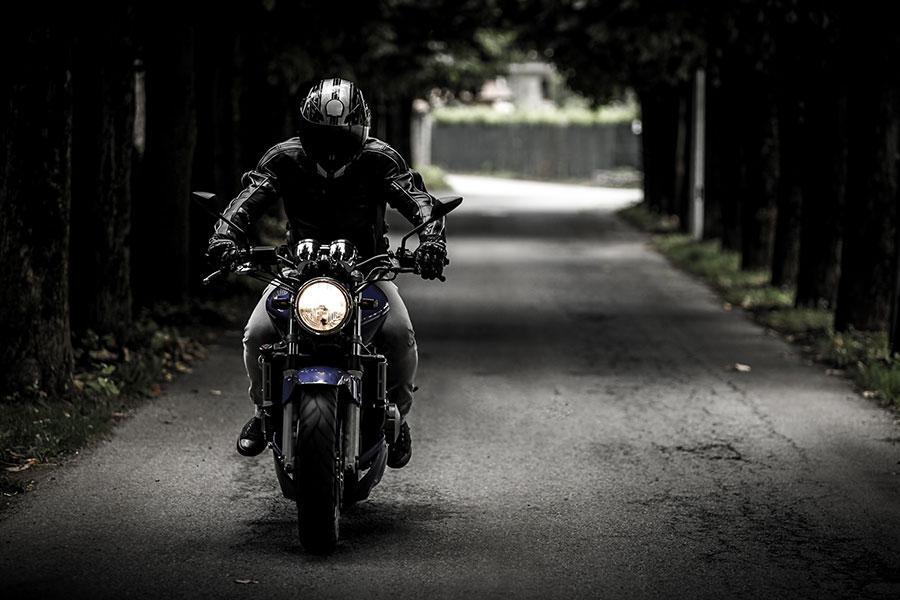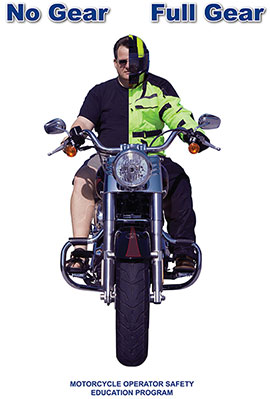
Sitting at a motorcycle rally in 1997, I was talking to a grizzled old biker. He was different from the rest of the bikers there; he used a full face helmet and a leather jacket when he rode, even in the heat of summer. He explained to me that I was a ~explicative~ idiot for not wearing a real DOT helmet and that my brain bucket wasn’t worth its weight in doggie droppings. We talked about the price of helmets, and how his was a $500 helmet before the custom paint, so I asked him how much a rider should spend on a helmet. His response has echoed to me ever since. “Well kid, how much is your head worth?”
The Cold Hard Facts
Riding a motorcycle is inherently dangerous. According to the National Highway Traffic Safety Administration (NHTSA), in 2013, there were 4,668 motorcyclists killed in motor vehicle traffic crashes, an estimated 88,000 motorcyclists injured, and motorcyclists accounted for 14 percent of all traffic fatalities. Motorcycles are less visible than other vehicles on the road and provide none of the protection needed to survive a high-speed collision. According to the NHTSA’s 2015 report, per mile traveled in 2013, the number of deaths on motorcycles was over 26 times the number in cars. 62% of those fatalities may have been averted if they had been wearing a helmet.
Safety gear is expensive though, right? Is it as expensive as living in a wheelchair for the rest of your life?
What Motorcycle Safety Equipment Do I Really Need?
 According to the Motorcycle Safety Foundation’s Basic Rider’s Course, every rider and passenger should wear a helmet, eye protection, over the ankle footwear with nonslip soles, long pants, a good jacket, and full fingered gloves.
According to the Motorcycle Safety Foundation’s Basic Rider’s Course, every rider and passenger should wear a helmet, eye protection, over the ankle footwear with nonslip soles, long pants, a good jacket, and full fingered gloves.
- Helmets: Ensure the helmet is truly an approved helmet, as novelty helmets (especially the German Army style) are often sold with a DOT sticker. Most authentic DOT helmets will also bear markings from another non-profit safety organization such as Snell, American National Standards Institute (ANSI) or ECE 22.05. Once you have found an approved helmet, proper fit is the most important aspect. Be sure that the helmet you choose does not rotate around when you shake your head. The helmet must not impede your peripheral vision.
- Eye Protection: While most full face helmets are equipped with an ANSI or Snell rated windscreen, many half face helmets do not provide eye protection. While your sweet pair of Ray Bans might look great, they carry no safety rating and no protection against a rock that flies up off the road from the car in front of you. There are many styles of safety glasses that are rated with certifications from CE, ANSI, and MILspec that will protect your eyes from debris.
- Boots: There are many styles of riding boots, from military combat boots to SuperSport racing boots. Boots are the easiest protection that a rider can get. A good quality pair will protect your feet and ankles in the event of a crash, or if you just generally fall off your bike. A solid sole and good ankle support are the bare minimum that a rider needs, though specialized boots may provide greater weatherproofing, articulation, or protection.
- Gloves: When you trip and fall, what is the first thing that usually hits the ground? If the answer was your hands, you fall in with the vast majority of humans. The concept is no different on a motorcycle. When you consider how difficult life would be if you were unable to use your hands, you also grasp the reality of how important good hand protection is. While it might be tempting to rev the throttle of your Beemer with a fashionable pair of Austrian leather gloves, you’ll want something much more durable if you ever need them. Look for gloves that are made from durable materials that will withstand abrasion in case of a fall at highway speeds. Some gloves are equipped with “sliders” or “palm sliders” that absorb the shock of the fall while protecting your palms if you go sliding down the road. Even if you never go down, gloves can protect you from any other randomly odd damage to your hands, such as (personal experience here) driving through a swarm of yellowjackets. Full finger gloves would have been wonderful that day.
- Durable Clothing: Time for another well-worn biker adage. Dress for the slide, not the ride. You may ride safely every single time you throw your leg over for the next hundred years. You may never touch pavement with anything but the soles of your boots, but there is always that chance. Durable clothing will protect you from one of the more painful experiences that a rider can have: road rash. For those who have never experienced road rash, count yourself lucky. When you arrive at the ER after your accident, the doctor will need to clean out the wound, which will likely be covered in road dirt, threads of the fabric from your clothing, oil, grease, and whatever else you may have slid through. This is completed with a large bristle nylon brush, and without the benefit of numbing medications. Consider this when you want to wear shorts on a hot summer day. Motorcycle specific clothing may include plastic body armor, quality leather, and Kevlar padding.
- Jackets: A good quality jacket is a staple of every rider’s wardrobe. They come in a wide range of styles, and with varying degrees of purpose and protection. Sport rider’s jackets often have built in back and chest protectors, as well as elbow and wrist guards. These should all be stitched in place, rather than just placed in pockets. There are few things as painful as having the very thing designed to protect you be the thing that ejects from the pocket and bruises or punctures your vital organs. Your jacket should be comfortable to wear in all climates. This includes having proper ventilation, and a weatherproof shell.
 Motorcycle Safety Training
Motorcycle Safety Training
Just having the right gear isn’t the only thing that a rider should have. A motorcycle training school is imperative. While the Motorcycle Safety Foundation certainly provides an extensive range of rider education, classes can also be found at local colleges, and accredited motorcycle riding schools. There are courses that cover the entire range of riding experience, from beginners Basic Riding Courses that explain the basic safe operation of a motorcycle to Expert Riding Courses that involve quick braking, swerving, traffic conditions, and other advanced skills. A motorcycle refresher course is a great way to get back in the saddle after a long season off the bike, or even for riders who have become complacent about risks. These courses of instruction teach and reinforce positive riding skills and a good mental attitude that will make the rider more competent, and less likely to be involved in a fatal accident.
Find a Riding Course in Hampton Roads
Though operating a motorcycle may have an element of danger, a rider has a conscious choice in how they mitigate those risks. The proper and consistent use of personal protective equipment and a solid riding technique, reinforced through experience and education goes a long way. The initial cost may seem high but approved safety gear can be the difference between a bad day that you tell your kids about, and a bad day that the state troopers tell your kids about. How much is that worth?
